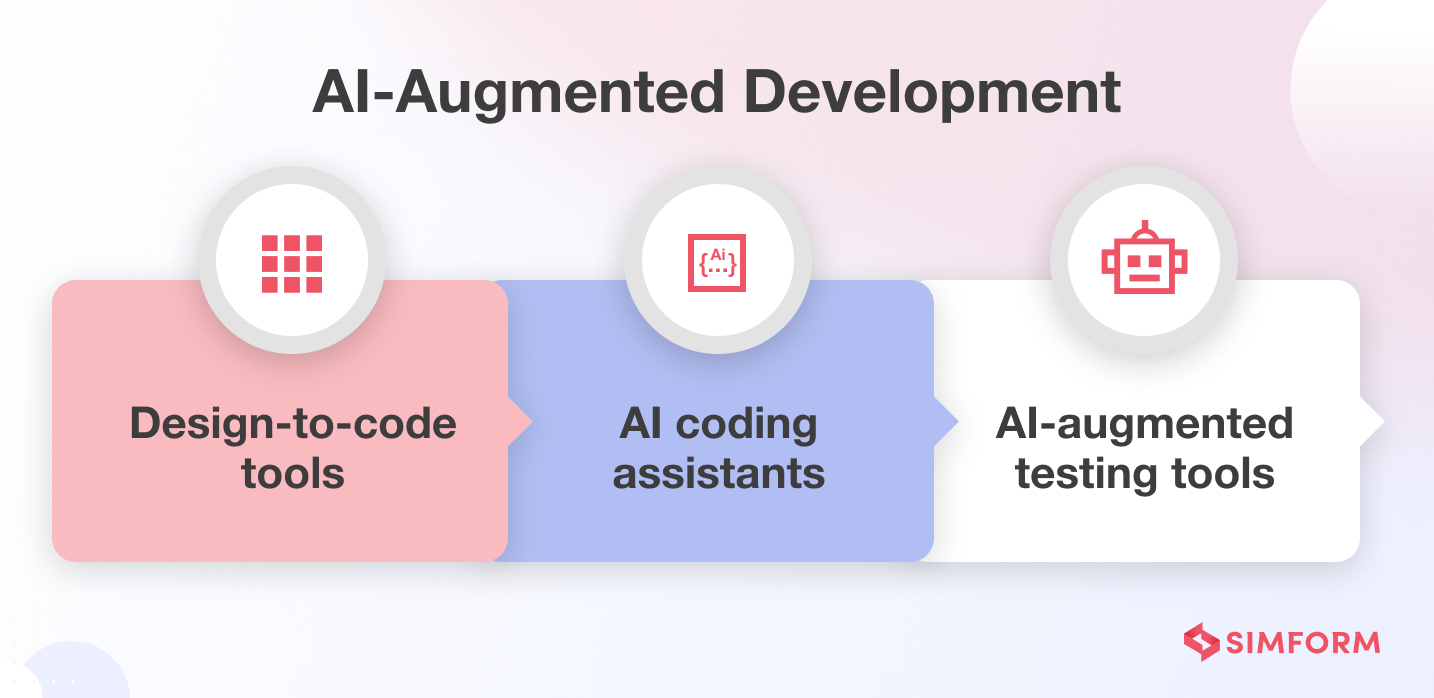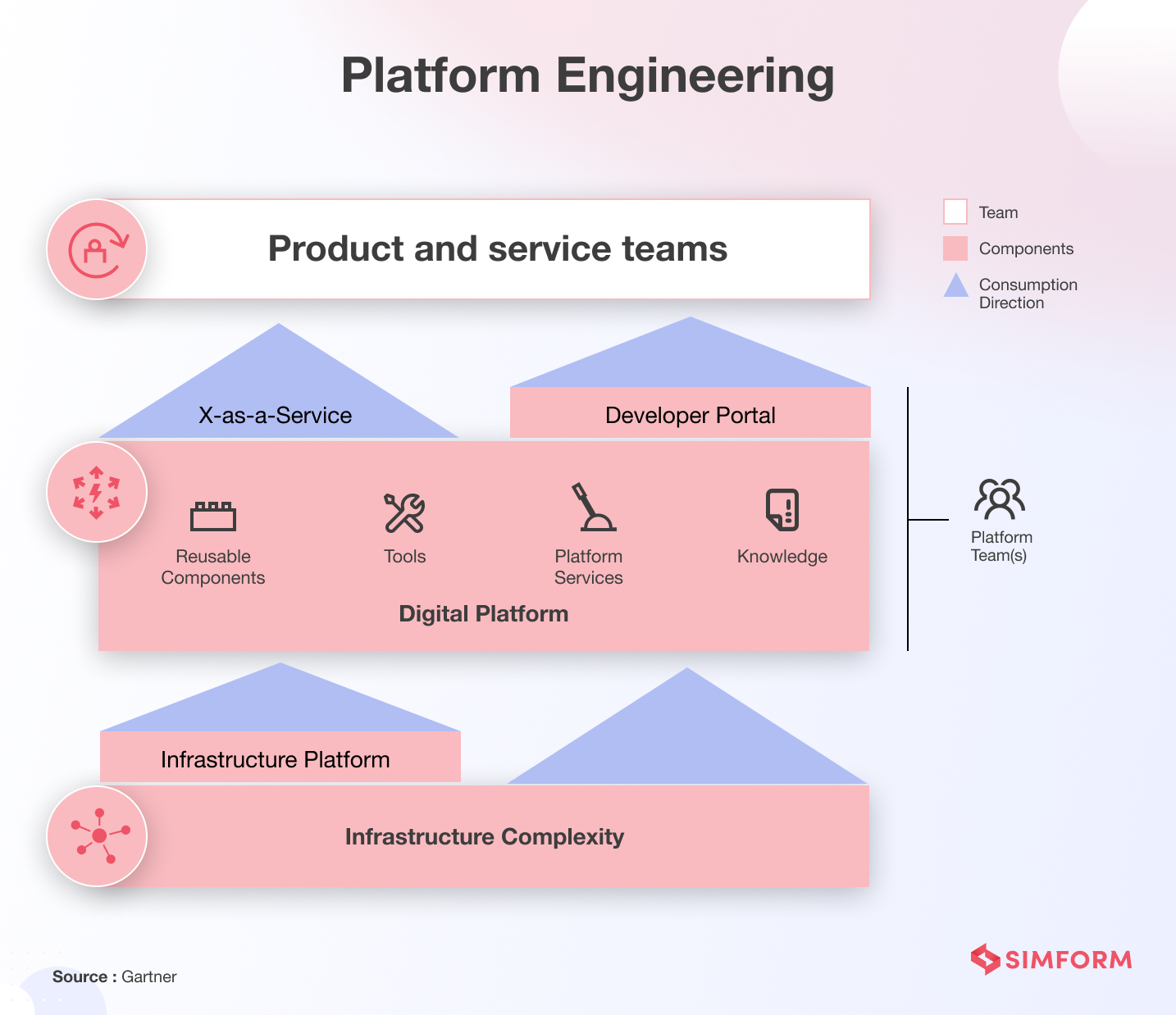The software development landscape in 2024 is in for a massive overhaul. It will bear little resemblance to the practices and tools we have become accustomed to over the past decade.
We’re entering an era marked by incredibly advanced artificial intelligence, automation that can rival human capabilities, and evolved cloud infrastructures tailored for specific industry needs (industry cloud platforms). The very definition of what constitutes a “developer” may also shift as low-code/no-code development plays an increasingly prominent role in democratizing app building and fostering the emergence of ‘citizen developers.’
In this dynamic environment ripe for innovation and change, staying informed and proactive is not just advantageous– it’s crucial. These impactful trends will significantly influence business and technology decisions for years to come. Moreover, with software market revenue expected to reach US$698.80 billion in 2024, the stakes are higher.
Our blog explores the key trends shaping software development in 2024, delving into the latest advancements backed by numbers and analysis. It aims to help uncover the opportunities and challenges that lie ahead in the ever-evolving world of software development.

1. AI-augmented development
AI was all abuzz in 2023 and will keep its popularity in 2024. AI technologies, such as generative AI (GenAI) and machine learning (ML), can augment and speed up the entire software development lifecycle.
Simform’s 2024 Generative AI Survey found that an impressive 61% of organizations prefer using GenAI for tasks like code generation and auto-completion. While 29.3% are using GenAI for code refactoring and optimization.
AI-augmented development tools seamlessly integrate with engineers’ environments,
- Helping produce code quickly
- Translating legacy code to modern languages
- Facilitating design-to-code
- Enhancing testing
It boosts developer productivity, meeting the rising demand for business-critical software.

2. Emphasis on Cybersecurity
Cybersecurity remains unparalleled and a top priority for organizations in 2024 as cyber threats become more sophisticated and frequent. Continuous adoption of the cloud, remote/hybrid work setups, IoT devices, and pervasive integration of technology in every aspect of our lives– are some factors driving the need for robust, holistic security.
In addition, AI has created a new security scare for organizations. Gartner projected a double-digit increase across all segments of enterprise security spending in 2024.
In light of these growing cyber risks, developers are adopting a multifaceted approach and exploring innovative strategies such as AI/ML-driven threat detection, zero-trust architecture, and cybersecurity mesh, with a notable emphasis on DevSecOps integration.
3. Surge in low-code/no-code development
The combination of increasing demand for digital solutions, new use cases for low-code/no-code (LCNC) platforms, and the rise of AI– all point to a surge in this trend in 2024. Furthermore, it is diversifying, with industry-specific platforms catering to unique needs.
LCNC platforms allow virtually anyone to develop software without traditional coding skills via drag-and-drop modules, pre-written features and templates, configurations, etc. They are relatively easy to use and cheaper than traditional software development.
Thus, companies of all sizes are jumping on the trend for faster development, reduced costs, and empowered “citizen developers.” It also helps alleviate the shortage of software engineers, democratizing development and quickly testing product ideas.
4. Industry cloud platforms
Industry cloud platforms (ICPs) are one of the key trends driving cloud adoption. ICPs are designed to meet the specific needs of vertical industry segments that generic solutions do not address adequately. This can encourage businesses in highly regulated industries such as finance services, healthcare, and manufacturing to embrace the cloud.
ICPs address industry-relevant business outcomes by combining underlying Software as a Service (SaaS), Platform as a Service (PaaS), and Infrastructure as a Service (IaaS) services into a whole product offering with composable capabilities. Organizations can use their modular and composable approach to be adaptable, agile, and innovative in the fast-changing digital landscape.
5. Platform engineering
It is another emerging technology approach that will see wider adoption in 2024. It involves self-service internal developer platforms built and maintained by a dedicated product team. These platforms are designed to support the needs of developers and other end users by providing a curated set of tools, capabilities, and processes. The goal is to enable frictionless developer experience, boost productivity, and accelerate the delivery of business value.
Platform engineering emerged in response to the increasing complexity of modern software architectures. It is now one of the hottest topics in the DevOps community.

6. Further adoption of AR/VR
AR, VR, and mixed reality (MR) are transforming digital interactions across various sectors, with the global market projected to hit 100 billion USD by 2026. Key drivers for the surge in AR/VR adoption include expanded hardware options, improved immersive experiences through AI and spatial computing, and growing affordability.
Other exciting developments to look for in 2024 include hyper-realistic VR, expanded social VR platforms, and AI integration for personalized experiences.
46.3% of organizations believe that integrating AR/VR with GenAI shows great potential, opening new doors for industries like education, customer service, healthcare, and more. For instance, Brilliant Lab’s Frame AI glasses can check the prices of clothing articles in retail stores or identify a home listing by glancing at it.
7. Microservices
The microservices market is also growing significantly, fueled by increased adoption of cloud, serverless, DevOps, and containers, along with the need for secure, cost-effective IT operations. Microservices break down applications into smaller independent services, facilitating agility and scalability.
2024 will also see a rise in event-driven microservices usage in cloud-native applications (driven by the emergence of new programming models) and multi-runtime microservices or MACH architecture (Microservices-based, API-first, Cloud-native, and Headless). Superapps and AI/ML integration will further drive innovation in the microservices landscape.
Check out how we developed microservices architecture for an EV charging platform for performance at scale
8. Blockchain beyond finance
Blockchain in 2024 will transcend finance and cryptocurrencies and emerge as a transformative force in software development. Its core features– immutability, transparency, and security– are capturing the interest of diverse industries like healthcare, retail, and more.
Businesses worldwide are integrating blockchain, with Small and Medium Enterprises (SMEs) being the fastest. SMEs prefer cloud-based solutions that are flexible and affordable rather than investing in on-premises solutions. Hence, blockchain-as-a-service (BaaS) is also seeing a rise in adoption.
BaaS is the implementation and operation of cloud-based networks by a third party for firms that develop blockchain applications. Major cloud players like AWS, Microsoft Azure, and IBM Cloud also provide BaaS solutions.
9. Sustainable software development
Microsoft has recognized ‘Sustainable Software Engineering’ as an emerging discipline, and rightly so, with today’s climate crisis. Sustainable software development involves optimizing code, deploying resources efficiently, reducing data processing, minimizing stored data, selecting green hosting services, and so on.
Additionally, the emergence of FinOps and GreenOps reflects the increasing emphasis on cloud cost management and environmental sustainability. Cloud providers are offering tools to help customers optimize costs and reduce carbon footprint.
In 2024, we expect a significant increase in focus on GreenOps and cloud cost management, leading to improved cost efficiency, cloud resource utilization, and energy efficiency while reducing environmental impact.
Conclusion
Embracing these trends opens doors to unprecedented possibilities, letting you remain agile, forward-thinking, and ready to adapt to transformative advancements. However, to leverage these trends effectively, organizations must evaluate their potential impact and benefits relative to their specific situation and business goals.
By incorporating these trends strategically, businesses can enhance resilience, maximize data value, drive growth, and accelerate digital business.
At Simform, we’re committed to staying at the forefront of these innovative trends and solutions to empower your business with the best of tech. Together, let’s embrace the future and craft innovative solutions that harness the full potential of these trends. For a kickstart, contact our subject-matter experts for a free 30-minute consultation!